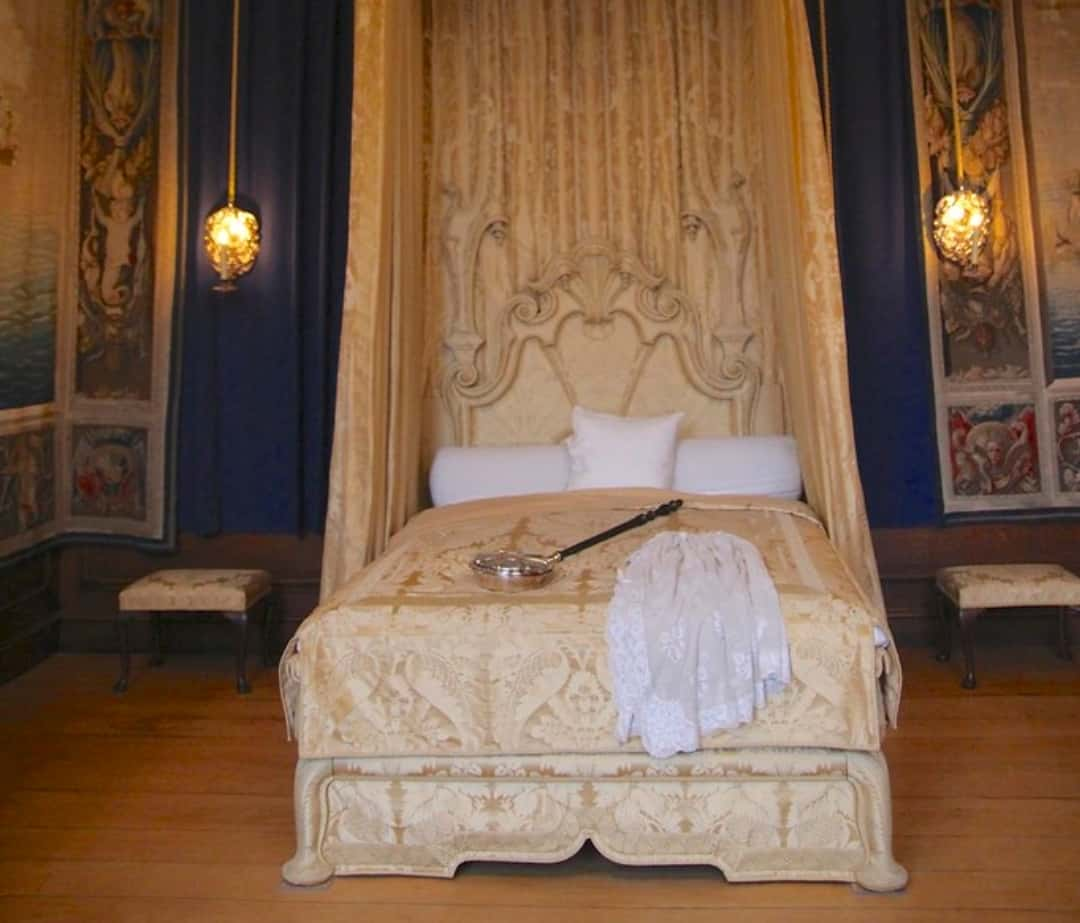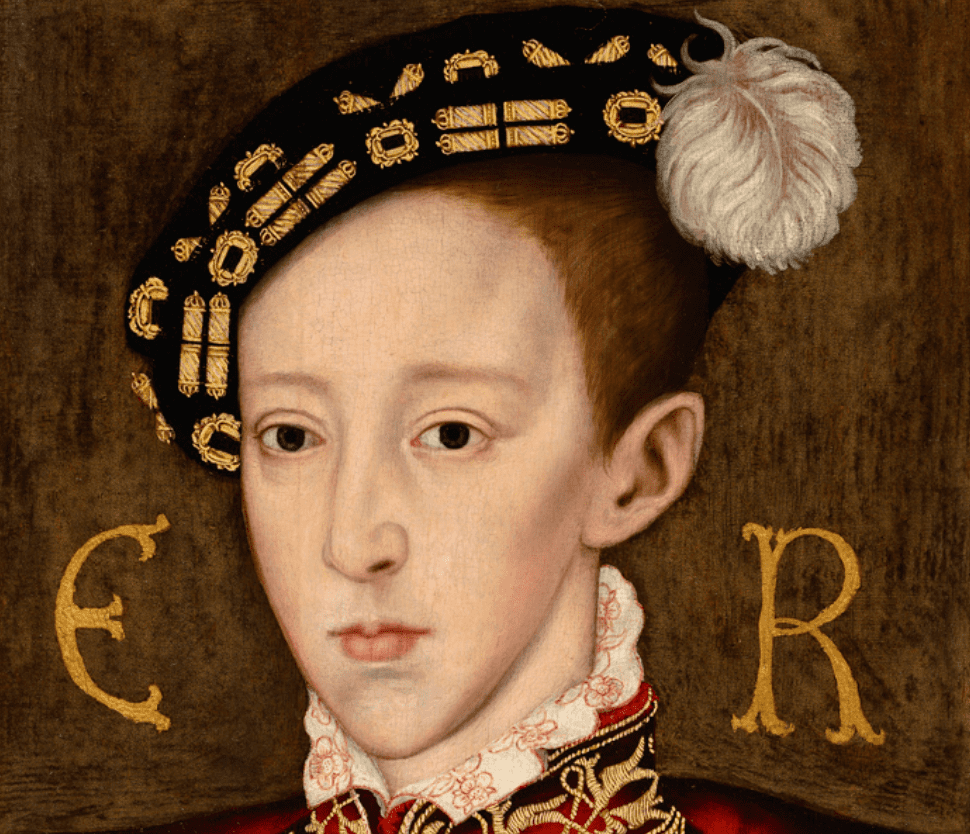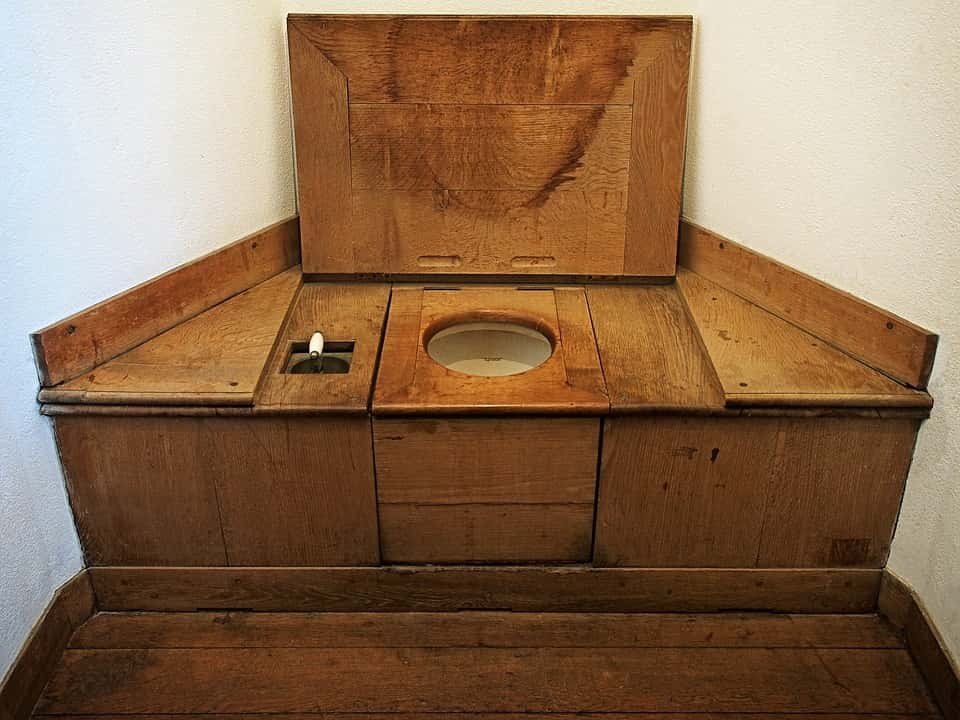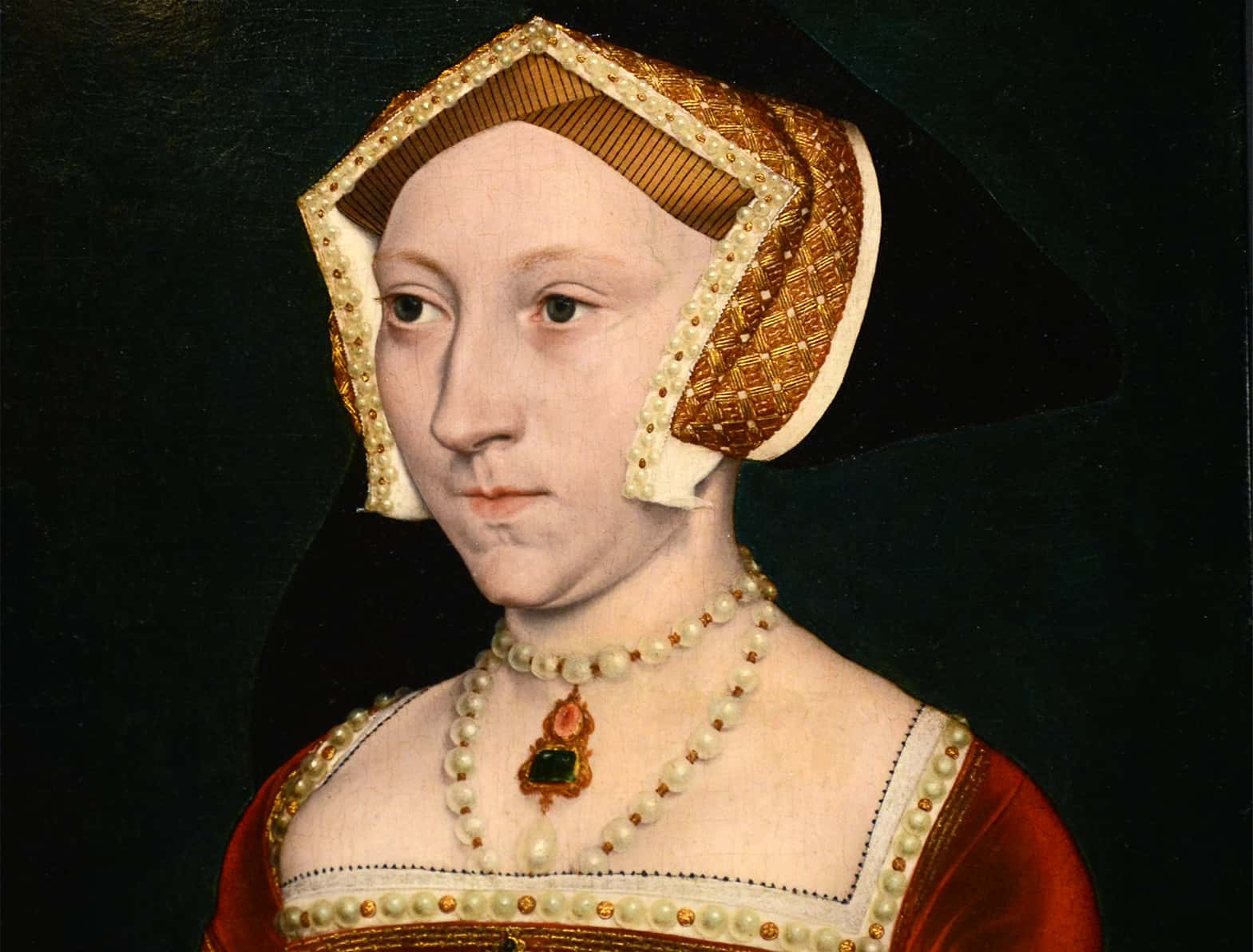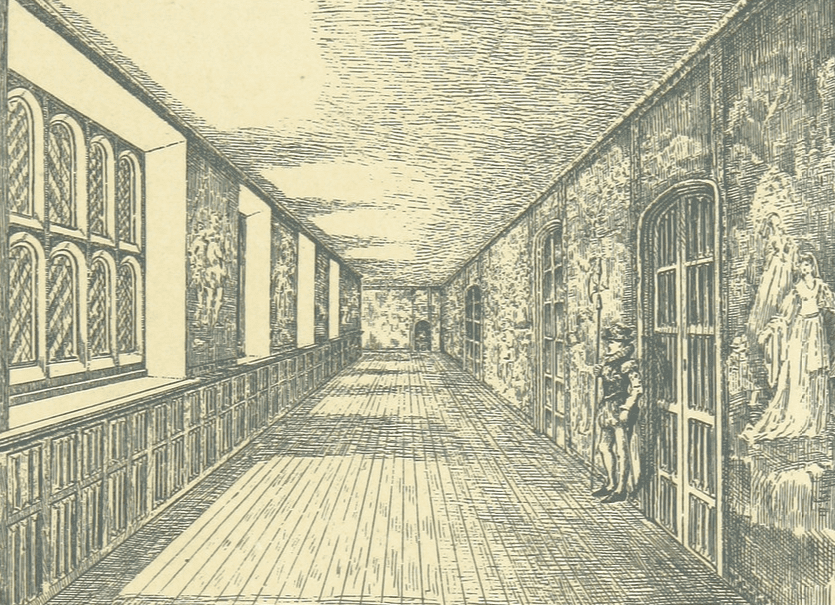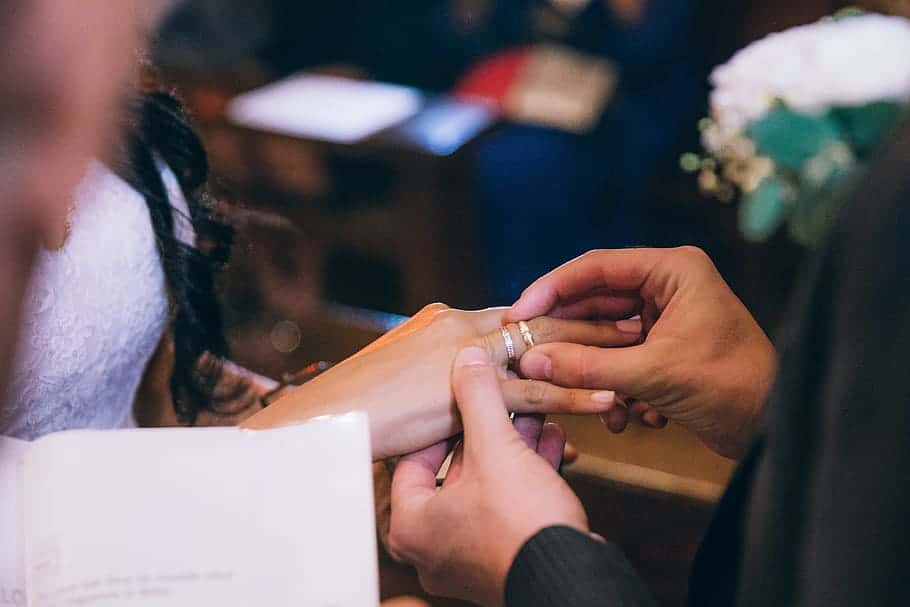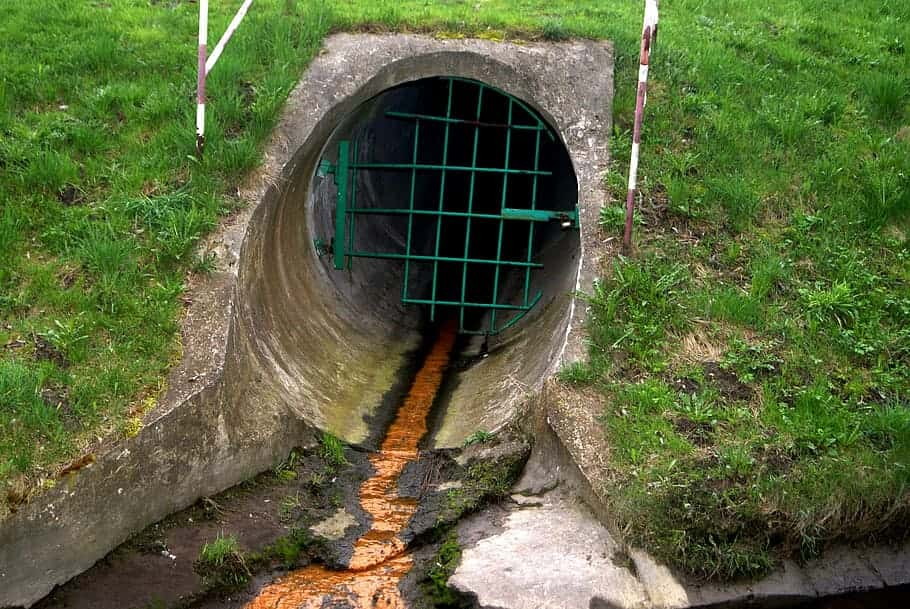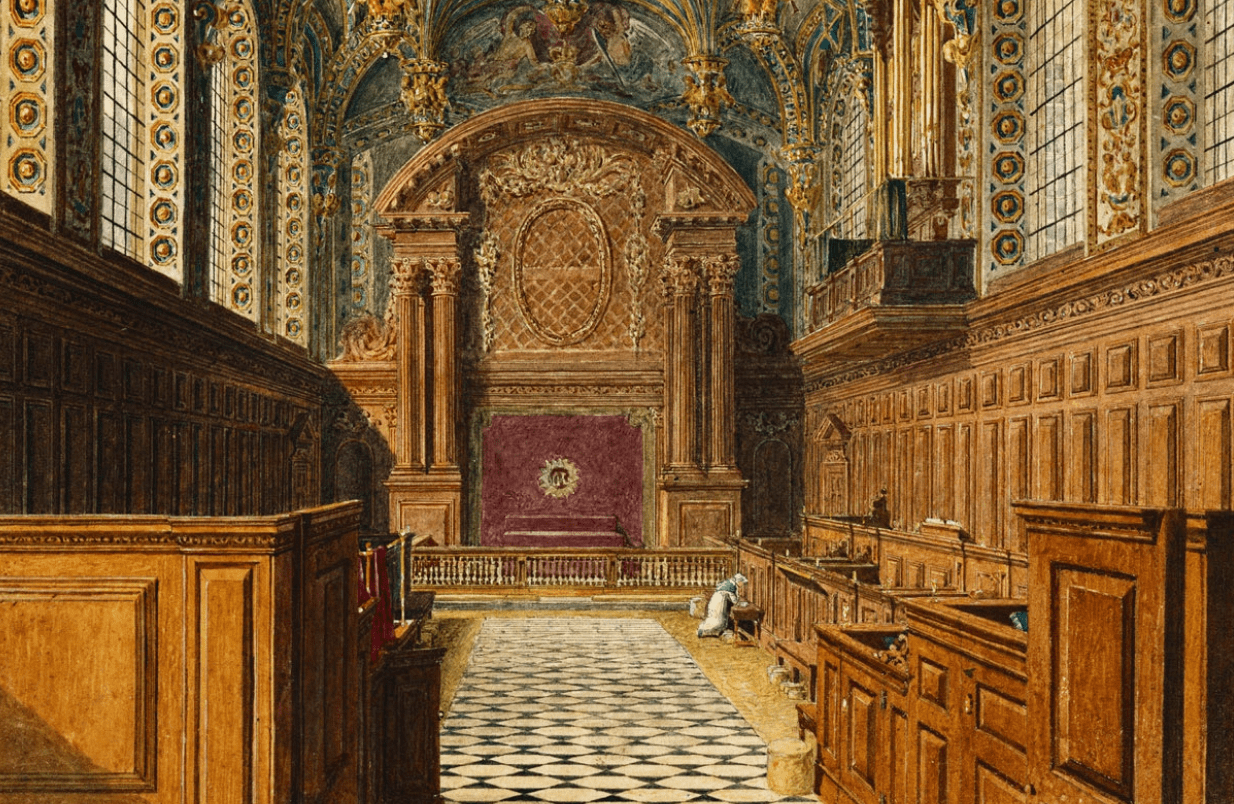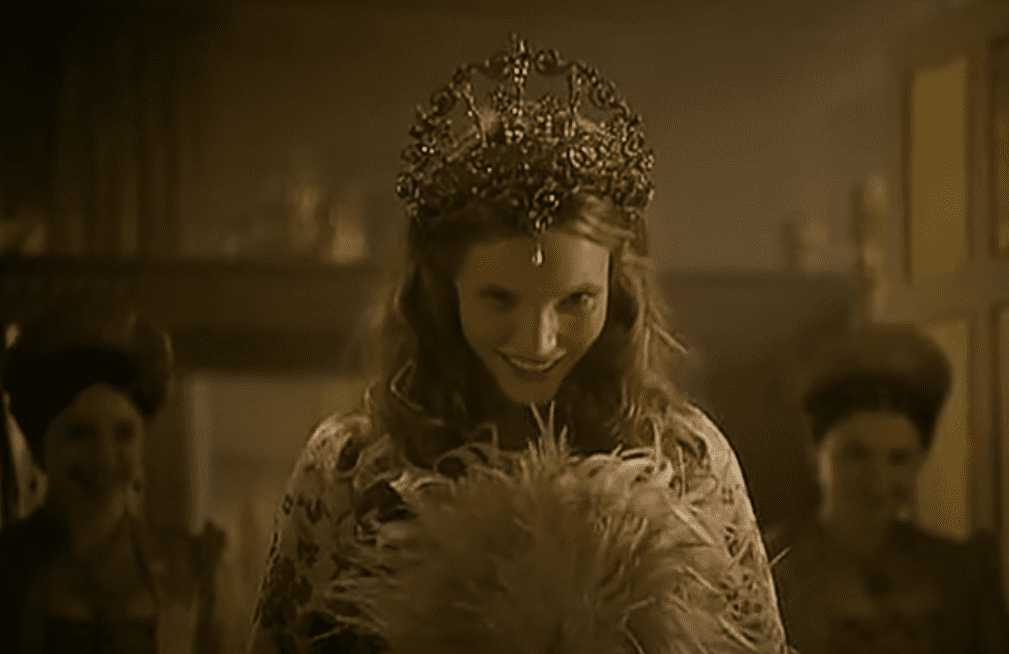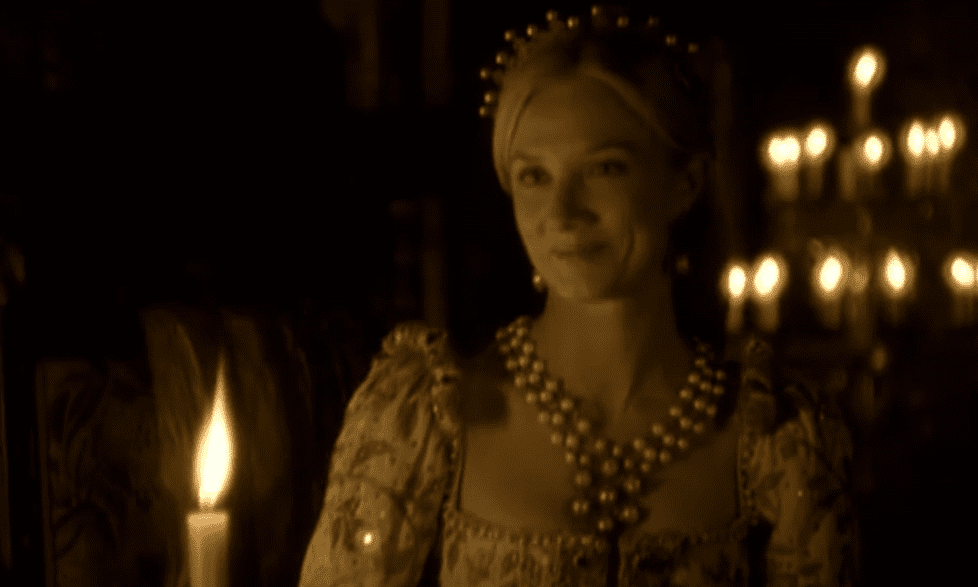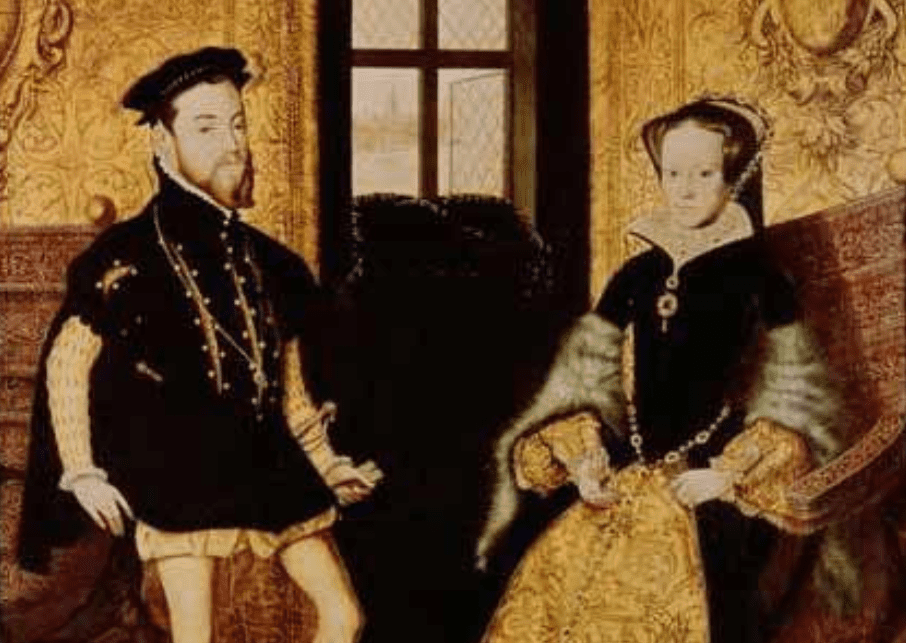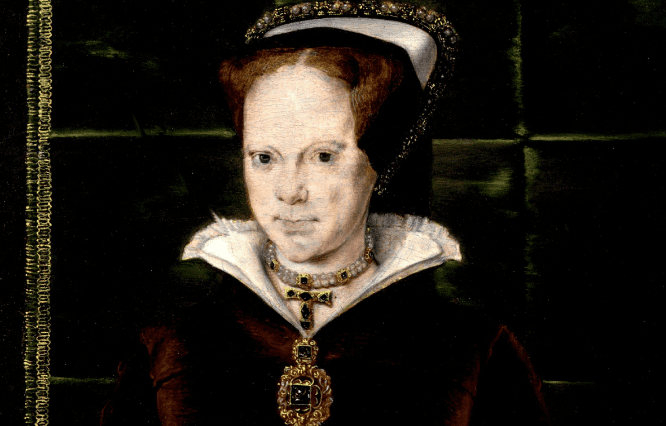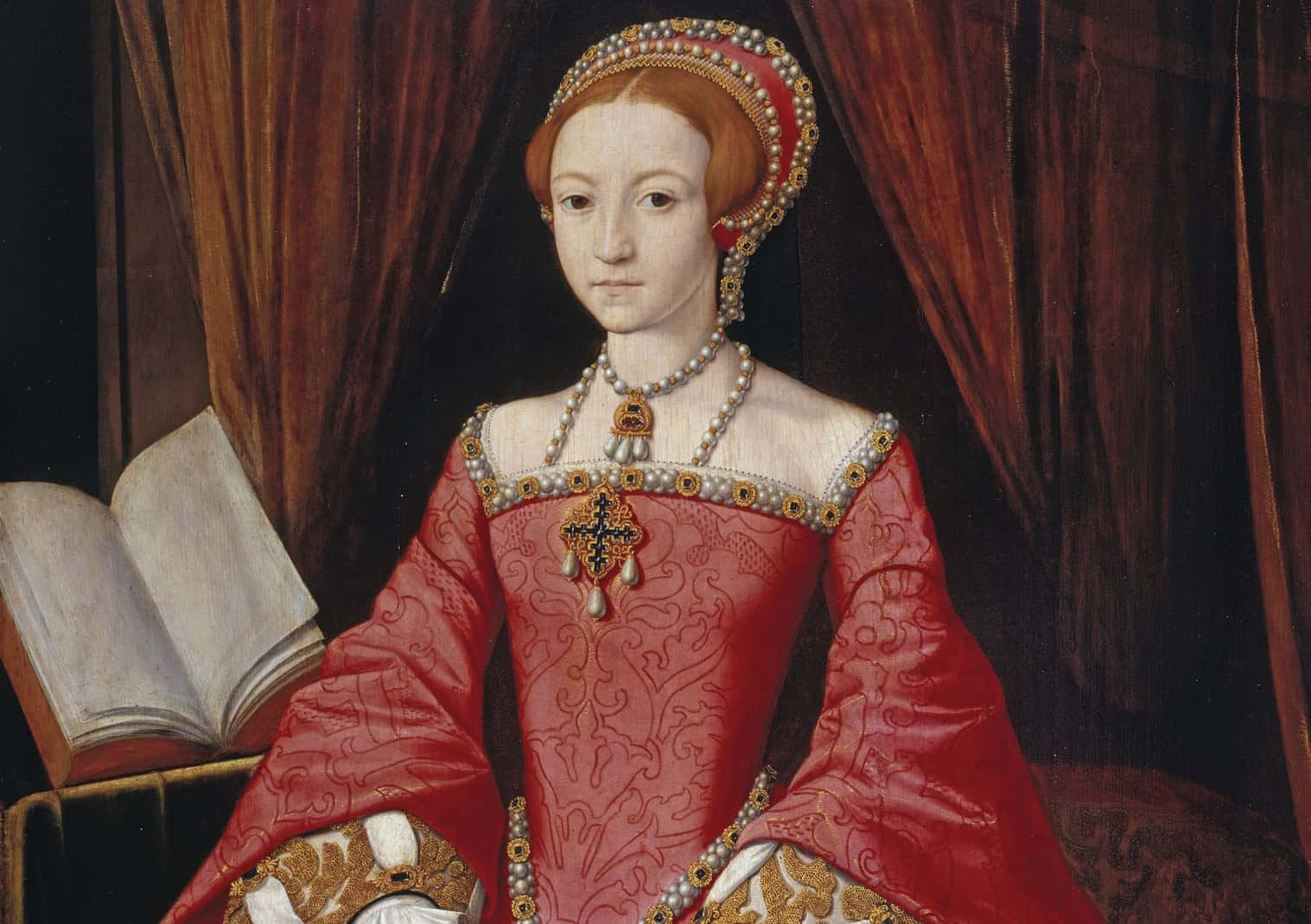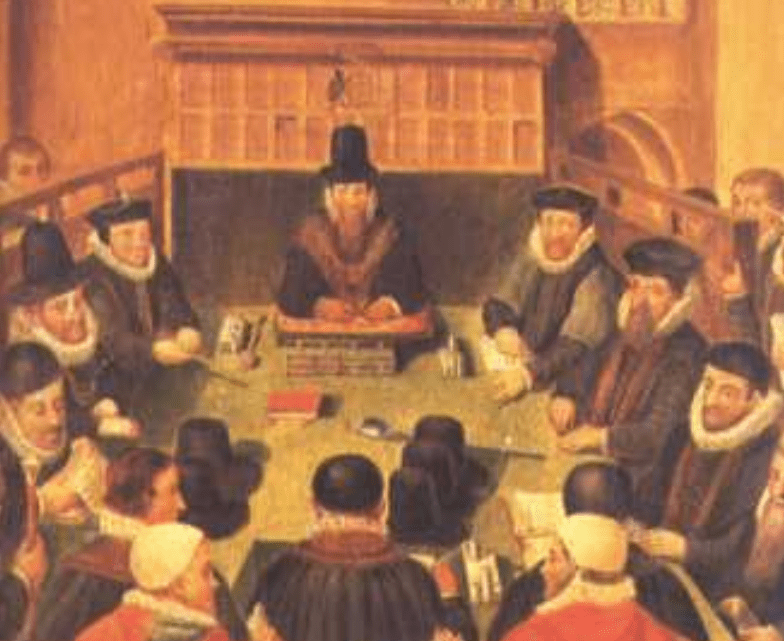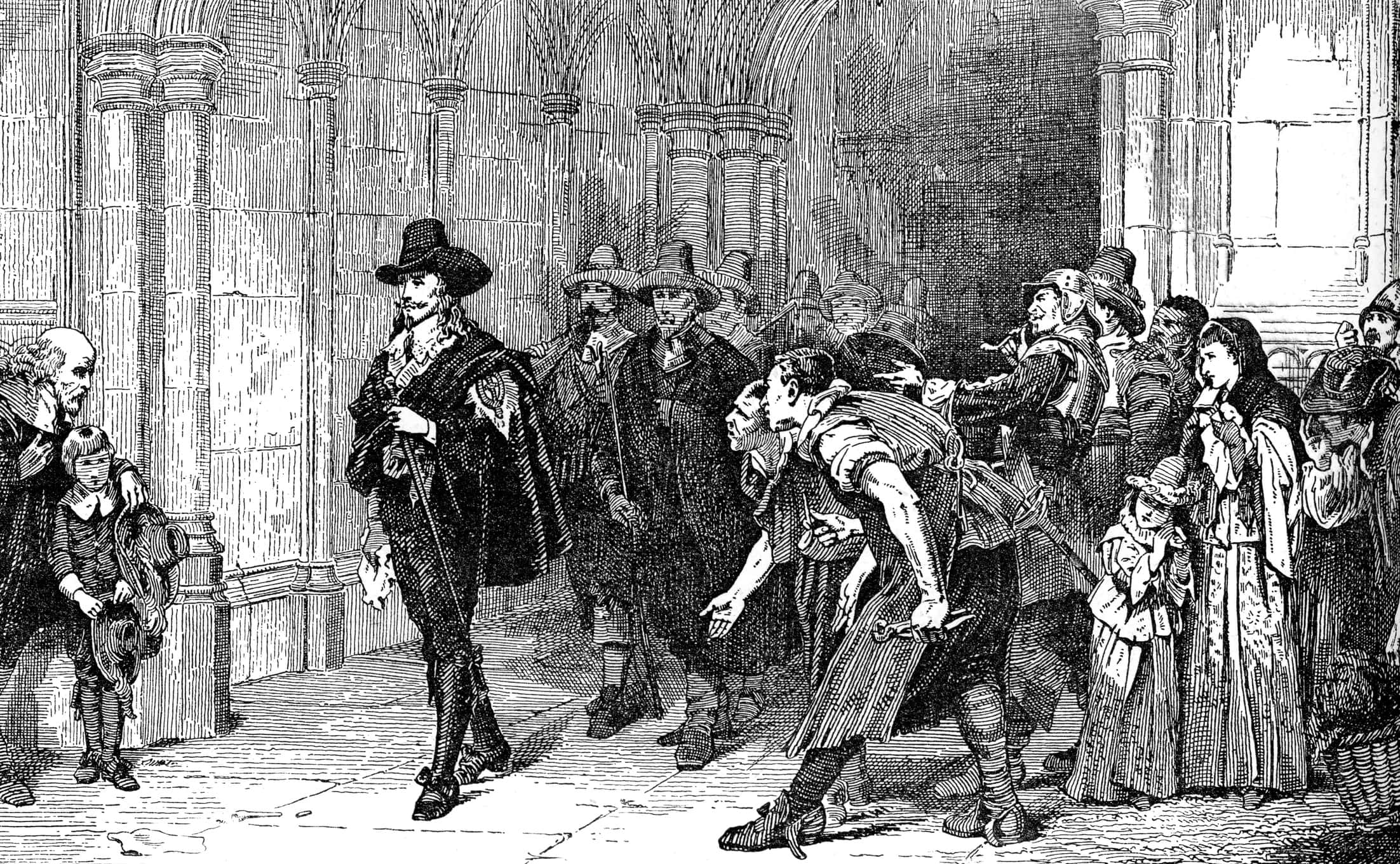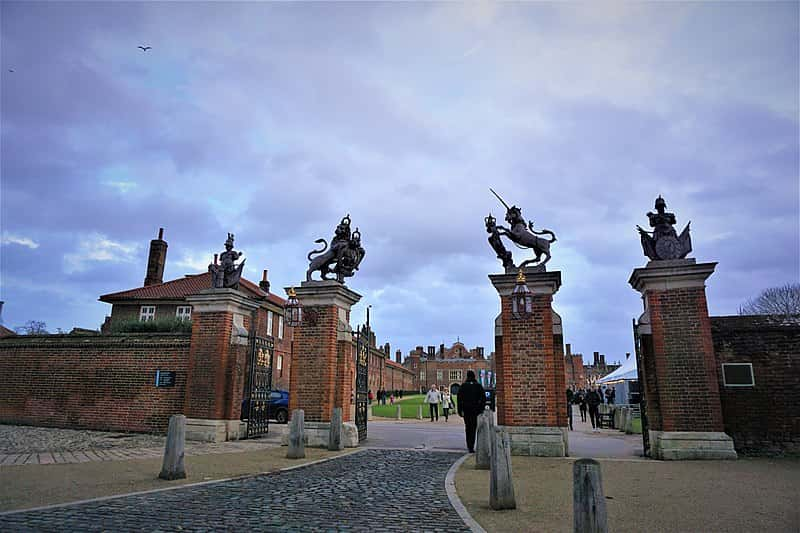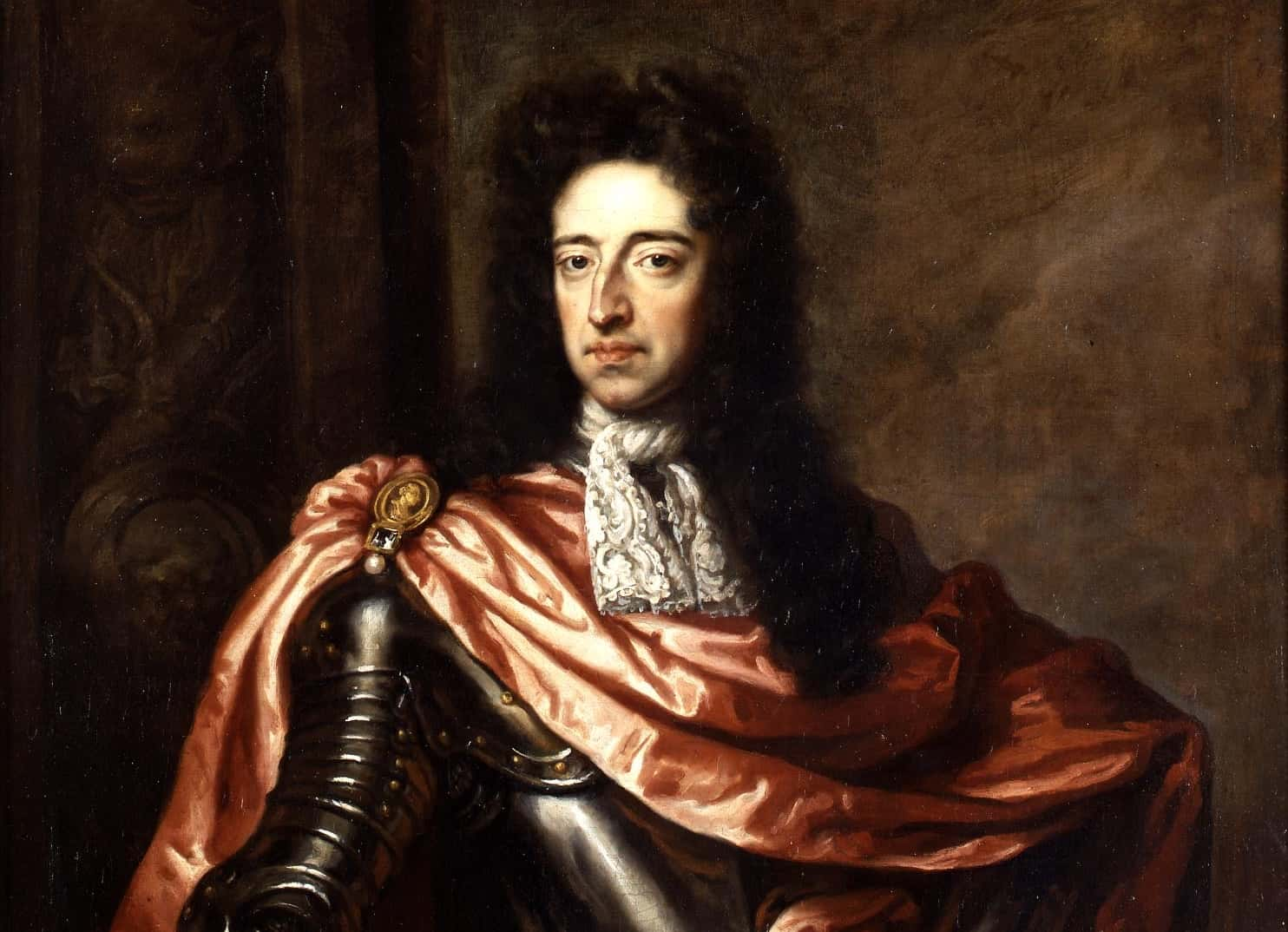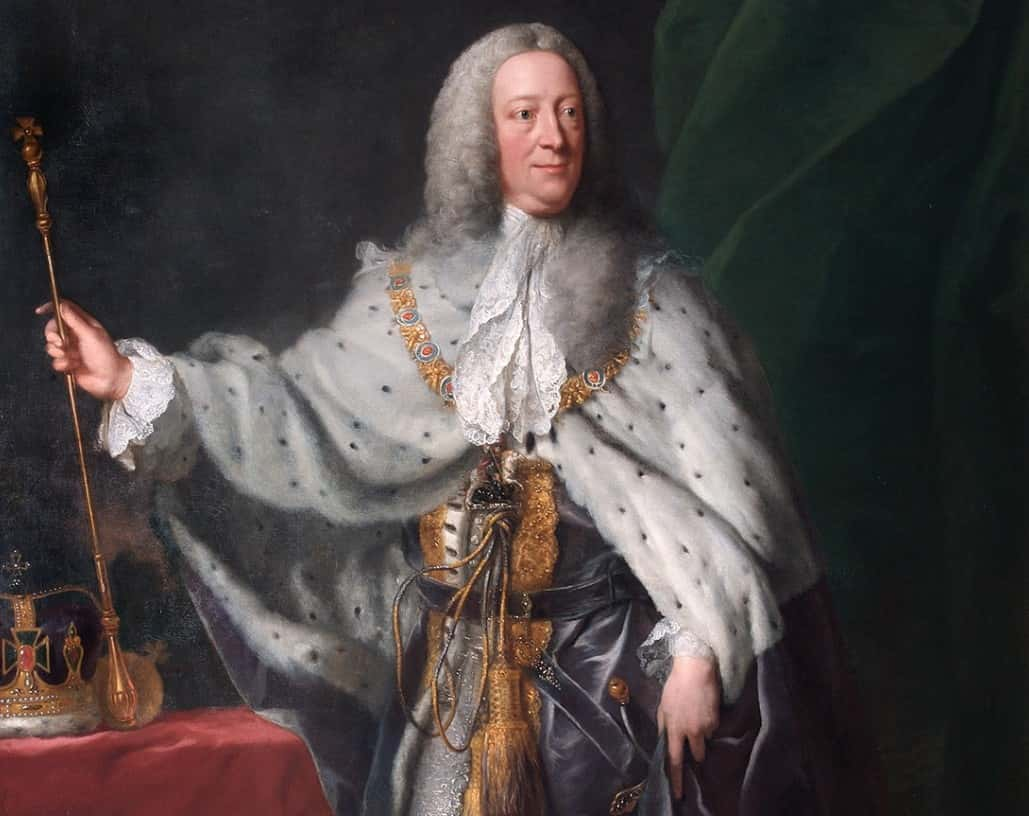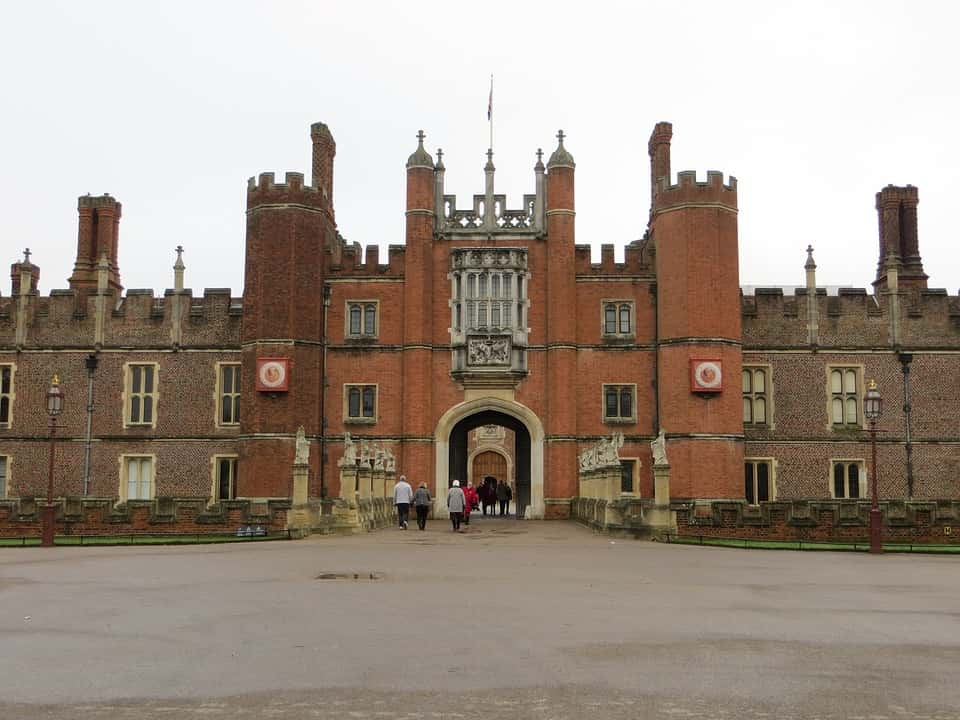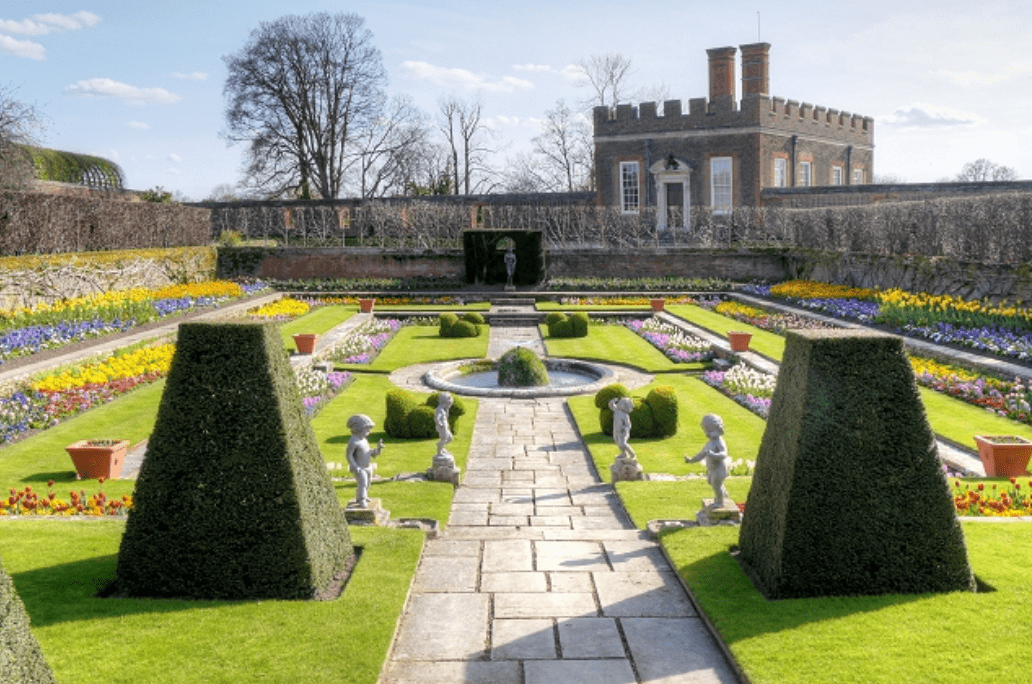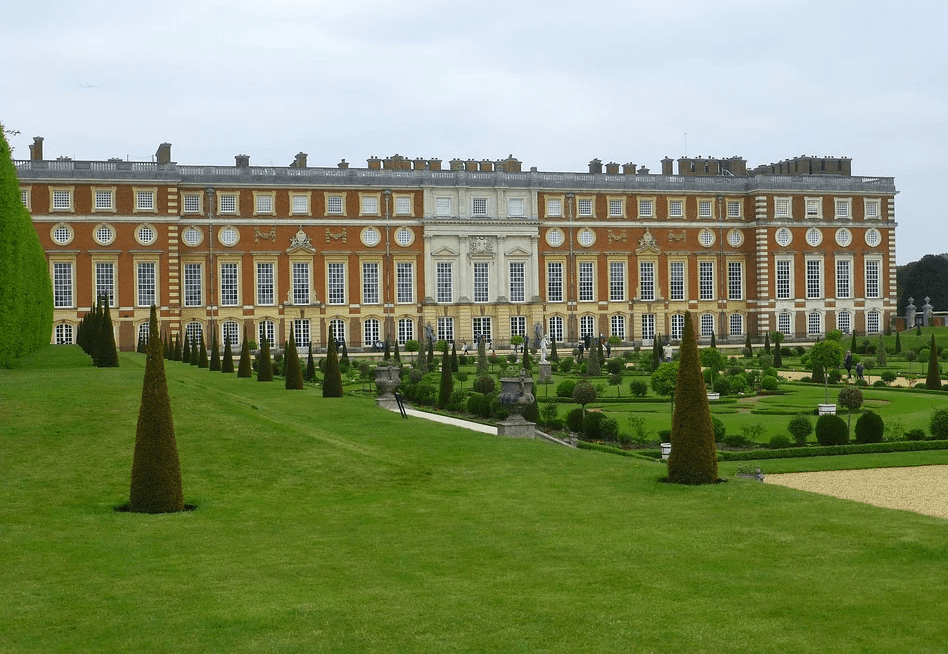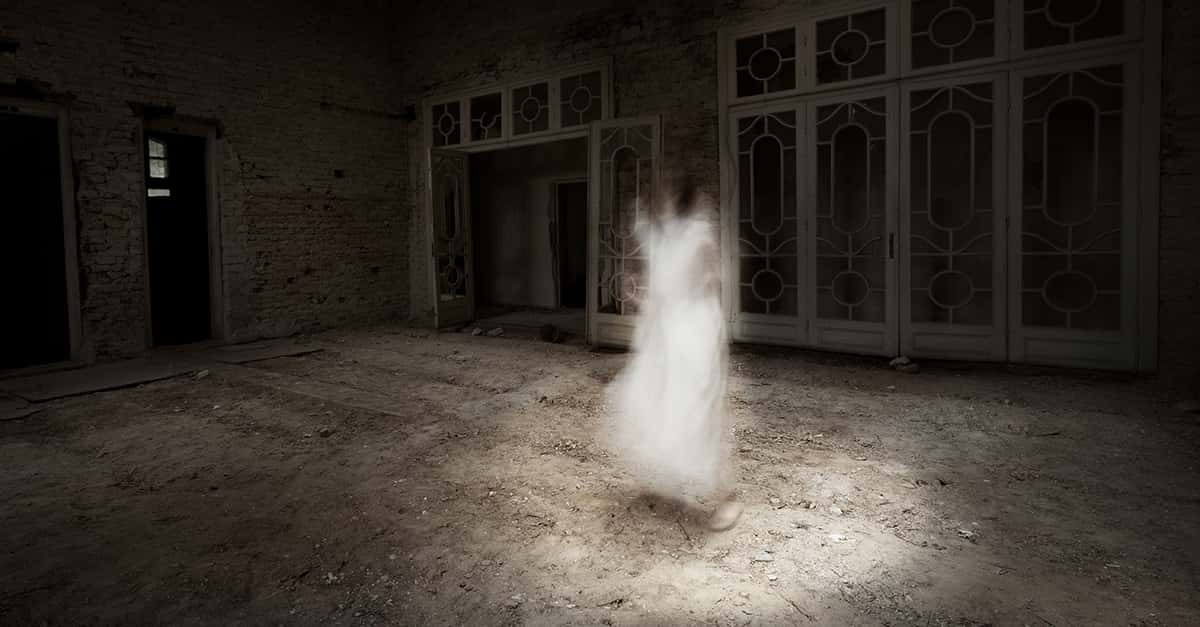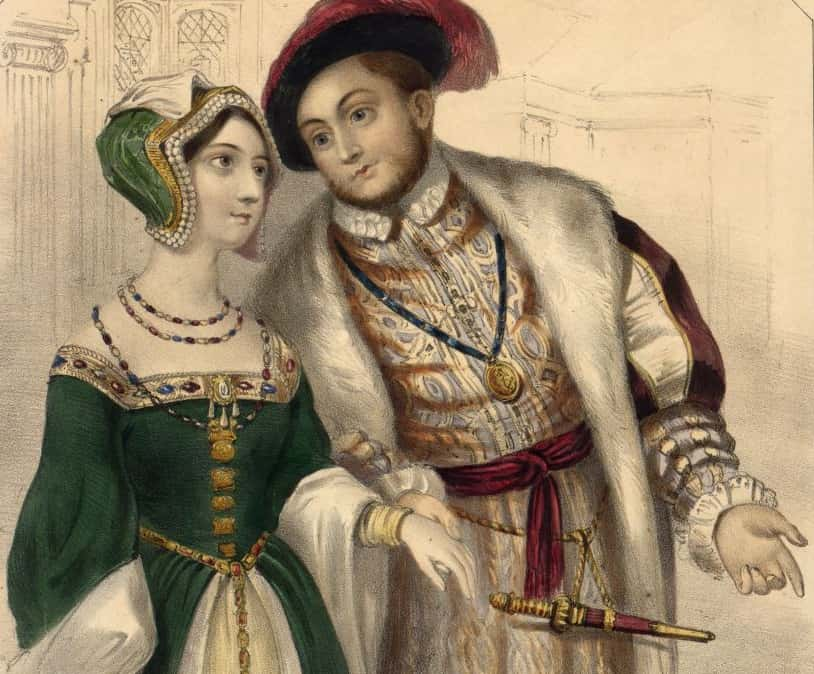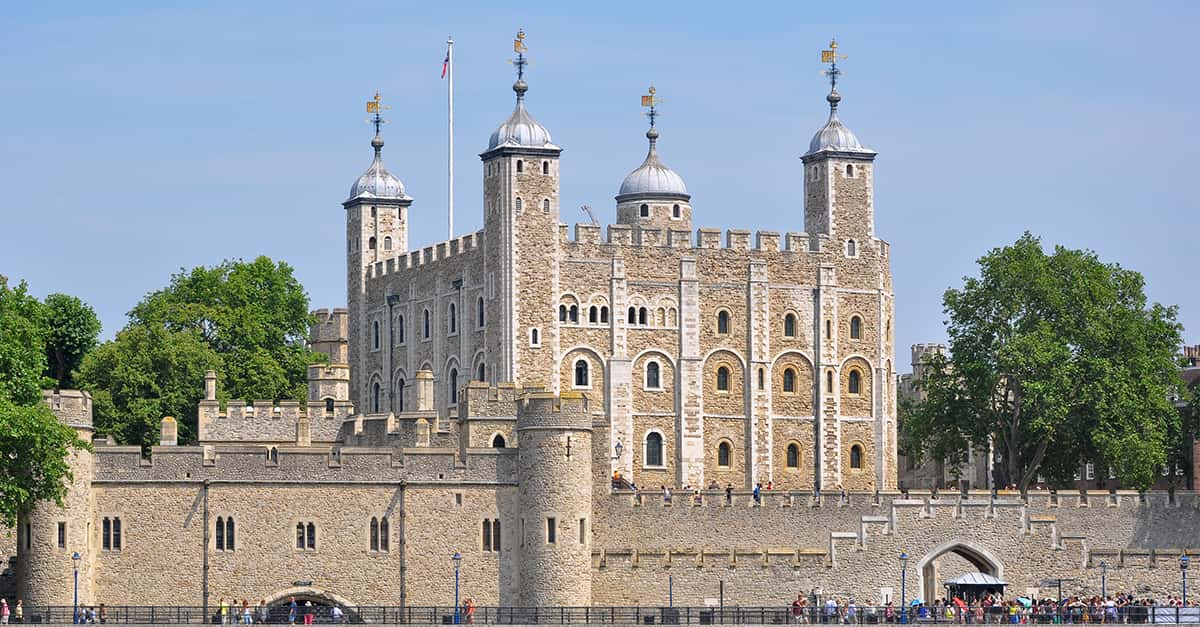While the Tower of London lives in English infamy, few people know about the haunted history of Hampton Court Palace, the bloody crown jewel of King Henry VIII’s reign. Built in scandal and lasting through years of intrigue, the palace saw the rise and fall of kings, queens, and cardinals alike—leaving behind more than a few ghosts. If these walls could talk, they would scream.
Hampton Court Facts
1. It Had Unholy Beginnings
In 1515, Cardinal Thomas Wolsey, one of King Henry VIII’s favorite courtiers, started building Hampton Court as a deluxe pleasure palace. For the next decade, Wolsey spared no expense on his brickwork bauble, pouring over 200,000 Crowns into its construction. Sadly for Wolsey, the palace’s dark history started almost immediately…
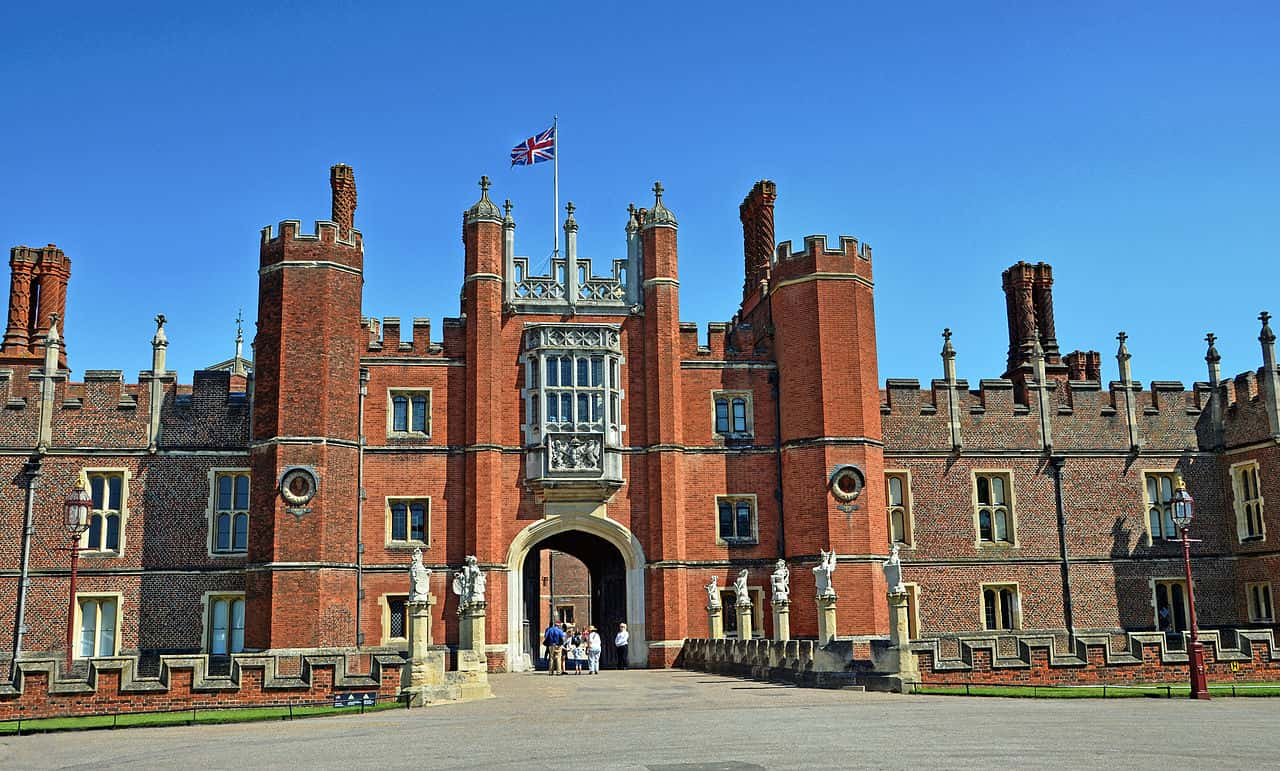 Wikimedia Commons, Duncan Harris
Wikimedia Commons, Duncan Harris
2. The Penthouse Suites Were Fit for a King
King Henry VIII graced his Cardinal’s “humble” new abode with his presence pretty much right after it was finished in 1525. As was befitting of a King of England, Henry stayed in the state apartments at Hampton Court, which were basically the penthouse suites of the Tudor period.
As it turns out, this was a fatal mistake.
3. It Was the Center of a Dangerous Game
Wolsey got precious little time to enjoy his new digs. Shortly after Henry’s visit to the palace, the cardinal fell from the tempestuous monarch’s favor. Desperate to appease the chop-happy king and knowing that Henry VIII had liked his stay, Wolsey “gifted” Hampton Court to him around 1529. It wasn’t enough.
4. Its Original Owner Met an Infamous End
King Henry VIII snatched up the palace instantly—it would, after all, become his most favored residence. Then he dealt Wolsey a cruel betrayal. Perhaps never intending to restore Wolsey to favor, Henry cut the Cardinal out of his life anyway, and the holy man died just two years later.
The palace’s first curse was complete…but Henry was just beginning.
5. It Was Supposed to Host Anne Boleyn
King Henry VIII’s first doomed wife, the bewitching Anne Boleyn, is tragically linked to Hampton Court. When Anne was still alive and in possession of all her essential body parts, Henry constructed lavish apartments for his queen at the palace.
Or, well, almost. In yet another court curse, Boleyn faced the chopping block before construction was finished...but that's not the last we'll see of Anne.
6. King Henry VIII’s Only Son Was Born There
In 1537, joy finally came to Hampton Court Palace...sort of. That year, Henry VIII’s third queen Jane Seymour became pregnant with the king’s child. Henry desperately wanted a son, so he was overjoyed when Seymour gave birth to a healthy and bouncing baby boy, the future Edward VI. But tragedy was just around the corner.
7. It Was the Site of a Horrific Labor…
Jane Seymour had an incredibly difficult time with pregnancy, and had even miscarried a child before bringing Edward to term—but her labor with the new prince was much worse than her miscarriage. The baby was likely in a breach or some other awkward position, and the painful labor lasted a grueling three nights. Henry’s response to this was truly disturbing.
8. …And a Horrific Ultimatum
When doctors informed Henry of how badly his wife was doing, the King’s reply was utterly ruthless. He made it clear that if it came down to the baby or Jane, he was happy to throw his wife under the bus.
The monarch reportedly told them, “If you cannot save both, at least let the child live, for other wives are easily found”. Well, that’s exactly what happened…
 Henry VIII (2003 TV Movie), Granada Television
Henry VIII (2003 TV Movie), Granada Television
10. It Had “Modern” Amenities
Believe it or not, Henry VIII was a pretty modern monarch. In order to accommodate his enormous court at Hampton, Henry built a whole block of medieval “toilets” he called “The Great House of Easement” down by the river. When it was still standing, it could fit 14 people at a time!
Meanwhile, Henry got his own private loo: a “throne” covered in sheepskin, black velvet, and ribbons.

Sign up to our newsletter.
History’s most fascinating stories and darkest secrets, delivered to your inbox daily. Making distraction rewarding since 2017.
11. A Queen of England Perished There
On October 24, 1537, just bare weeks after the birth of her son, Jane Seymour passed within the walls of Hampton Court Palace. Debate rages to this day about the cause of her death, with some historians speculating about a retained placenta, bacterial infection, or even a pulmonary embolism.
One thing is certain: It was not a good way to go.
12. Henry VIII Mourned Within Its Halls
Despite his mercenary comment to the doctors, Henry was devastated at Jane’s passing. He wore black for months afterward, even as he courted his next queen, Anne of Cleves. Historians believe Jane was his favorite wife…because she gave him a boy. It was enough intrigue to last a lifetime, but Hampton Court had far more drama to come.
13. Henry VIII Liked the Palace for a Cruel Reason
During Henry VIII’s time at Hampton, the palace had an ultra cruel design function. Its rooms form a long chain leading from the most general receiving room to the king’s inner chambers, with a guard at each doorway. The structure acted as royal “face control”: You had to be part of Henry’s cool crowd to get anywhere near his private spaces.
14. It Pulled in Henry’s Other Doomed Wife
While King Henry VIII’s fourth wife Anne of Cleves left Hampton Court with her head intact, her successor Catherine Howard wasn’t nearly so lucky. Like the palace itself, Catherine actually started out with scandal.
She began as Anne’s lady-in-waiting and met Henry at court, where they started an illicit romance. But karma was waiting for the girl.
15. Henry and Catherine Howard Made It “Official” There
Henry annulled his marriage to Anne of Cleves after just six months of marriage on July 9, 1540. Now a free agent, he wasted zero time making it official with his sidepiece, Catherine Howard.
The pair married a scandalous 19 days after his annulment and used Hampton Court to make the announcement official. And if that wasn’t enough drama…
16. It Was Part of an Illicit Romance
Although she was now Henry's queen, Catherine was hiding ruinous secrets. While she was still a maid-of-honor to Anne of Cleves, Catherine was also courted by a favorite of the King, Thomas Culpeper. When she became queen, her relationship with Culpeper didn’t stop, and the pair had secret meetings all over Henry’s many palaces.
This would be her downfall.
17. It Was the Site of a Royal Reconciliation
In public, Anne of Cleves didn’t seem to resent her old lady-in-waiting Catherine at all. Anne even visited Hampton Court Palace for one Christmas and gifted the couple some horses. In turn, Catherine gave her ex-boss a ring and two puppies as Christmas gifts, and the two danced together in the great hall at the palace.
Too bad those good times came to a crashing halt.
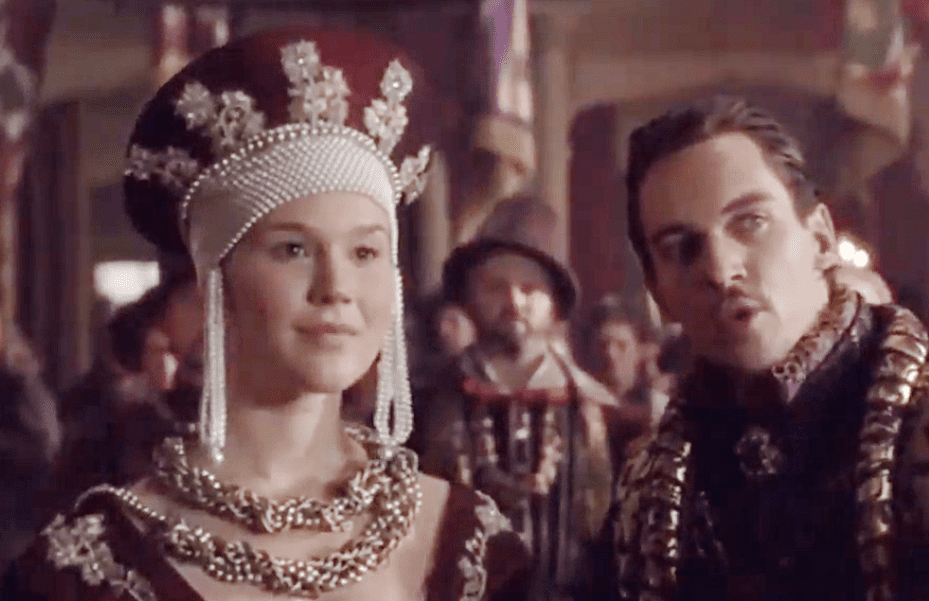 The Tudors (2007–2010), Showtime Networks
The Tudors (2007–2010), Showtime Networks
18. Its Bedchambers Had Dark Secrets…
Eventually, the king got wind of Culpeper and Howard’s relationship and gave investigators permission to rip apart Culpeper's chambers. What they found was the final nail in the coffin. They uncovered a letter from Howard to Thomas Culpeper, written in her distinct handwriting.
But it wasn't just any old letter—it contents all but buried her.
19. …And Even Darker Letters
In the fateful letter, Catherine reveals that her heart belongs to Culpeper, not Henry. As she wrote, "When I think again that you shall depart from me again it makes my heart die to think what fortune I have that I cannot be always in your company”. She signed the letter “Yours as long as life endures”. That life would not endure long.
20. The Palace Could Be Utterly Disgusting
Tudor monarchs frequently moved from palace to palace. This wasn’t just because they could—it was also out of a disgusting necessity. After the mass of courtiers had a few gut-busting feasts, the castle sewage systems got very backed up. Moving the court gave servants the necessary time to clean the vacated palace.
Ew.
21. Its Chapel Became a Den of Sin
Henry used Hampton Court to try to “win the breakup” with Howard. Although it’s very likely he already knew about Catherine’s treason, Henry oh-so-conveniently arranged to be praying in Hampton Court’s chapel when the official warrant for her arrest came down. That way, he looked extra good and merciful as he signed away his wife's life.
22. Catherine Howard Tried to Escape It
According to one story, Queen Catherine's arrest couldn't have gone more horrifically. Apparently, she briefly escaped her captivity and ran to where King Henry was hearing mass, again in Hampton Court’s chapel. Before she could make it to the door and beg for her life, the young Queen was dragged back to her apartments, kicking and screaming all the way.
23. A Ghost Haunts the Halls
The tale of Catherine Howard's desperate escape and attempt to plead for her life is now one of the most famous ghost stories in royal history. If you go to Hampton Court Palace, they say you can catch a glimpse of a screaming specter in white, rushing down the “Haunted Gallery”. That would be Catherine's ghost, trying and failing to save herself once more.
24. Henry Nearly Used It to Kill His Queen
When King Henry first learned of Catherine’s dalliance with Thomas Culpeper, he did not take it lying down. His deranged response is impossible to forget. Henry reportedly flew into a rage and called for a sword, all so he could kill his wife himself, right then and there.
Obviously, he eventually had the matter outsourced….
25. It Had a Strange Dress Code
The people of King Henry’s court had to dress to the nines every time they saw the king. Although it was an outward display of their wealth, being on the cutting edge of fashion could also help courtiers in other ways.
The better you dressed at functions, the more likely you were to get past the men guarding Henry’s most private rooms.
26. It Saw the End of Yet Another Queen
Folklore says that Catherine's last words as she went to the block were “I die a Queen, but I would rather have died the wife of Culpeper”. This is a myth—but her real final words were even more heartbreaking. Howard was repentant, crying that she deserved “to die a thousand deaths” for betraying a king who always treated her so “graciously". Then the axe came down.
27. It Was the Site of a Royal Wedding
Hampton Court saw one more queen before Henry’s reign ended: His last wife, Catherine Parr. The royal pair even married at the palace on July 12, 1543. Parr was wily, well-traveled, and she also managed to outlive her volatile husband. But while Henry passed in 1547, Hampton Court wasn’t done with the Tudor monarchs and their tragedies…
28. Henry VIII’s Heirs Used It Too
When Henry’s eldest daughter Mary became Queen of England, she followed in her father’s gruesome footsteps. A staunch Catholic, the queen’s persecution and burning of Protestants earned her the nickname “Bloody Mary”. But few people know about the personal terrors the queen experienced inside Hampton Court.
29. It Put the “Pleasure” in Pleasure Palace
Queen Mary adored Hampton Court Palace…at first. After all, she and her husband King Philip spent their honeymoon ensconced inside Hampton’s red brick walls, getting right down to the baby-making that the British people expected of them. Unfortunately for Mary, the baby-making is where it all went so, so wrong.
30. It Was a Love Nest
Sometime after the royal couple’s idealized honeymoon, Mary found herself pregnant with her first child. Overjoyed, she chose to birth the baby at Hampton Court—since it was likely conceived there, it seemed like a good omen to bring the heir into the world there. The queen posted up at the palace for five months…but she soon realized the horrific truth.
31. It Nursed a “Phantom Pregnancy”
As it turned out, Mary was afflicted with a bizarre “phantom pregnancy,” the first of two she would have in her life. All the signs were there—she’d missed her period, gained weight, and even felt nauseated in the mornings—but there was simply no baby. After months of awaiting the birth of her “child,” Mary finally had to concede to her utter disappointment. Her womb receded soon after.
32. It Imprisoned a Princess
Maybe Queen Mary’s relationship with Hampton Court started to sour after her false pregnancy, because she also used the palace for a cruel personal vendetta: She imprisoned her own sister there. Princess Elizabeth, later Queen Elizabeth I, was a threat to Mary’s rule, and she kept the girl under various house arrests around Britain, including Hampton Court.
33. It Helped Change Religions
It wasn’t all doom and gloom at the palace—though believe me, the worst is yet to come. Hampton Court could also be a place of great learning.
In 1604, King James I held his famed Hampton Court Conference to try to come to an agreement with the country’s angry Puritans. This meeting led to a little thing you might have heard of: The King James Bible.
34. It Was a Royal Honeymoon Destination
In the 17th century, Hampton Court was the setting of yet another ill-fated honeymoon—but while Queen Mary I got off “lightly” with just a phantom pregnancy, King Charles I and his teenaged bride Henrietta Maria had worse luck. Although they spent a lavish honeymoon at the palace, they also came to some of the darkest fates in all of British history.
35. It Captured a Fallen King
Charles I believed in The Divine Right of Kings, an outmoded way of thinking even for the time. In short, Charles thought the King of England should have absolute, divine power. This did not work out well for him: In 1649, the English parliament arrested Charles for high treason and general douchebaggery, forcing his now-impoverished wife to flee.
In one fell swoop, Hampton Court turned from Charles’ palace to his prison.
36. It Witnessed a Great Escape
Charles I still had a lot of fight in him, and one day he made an escape through Hampton Court’s magnificent Privy Garden. It was a valiant effort...but it still failed miserably.
Parliamentary leader Oliver Cromwell caught him and soon finished the job. Charles was beheaded—the first and only English King to meet that fate.
37. Even Commoners Couldn’t Resist It
The short-lived English Commonwealth after Charles I’s unprecedented beheading is one of the more bizarre eras in British history, but Hampton Court’s role in this period is just as strange. While people at the time went around destroying royal castle after royal castle in the name of democracy, Hampton Court still stood.
Why? Olivier Cromwell liked it so much, he made it his home.
38. It Had a “Honeymoon Curse”
When Charles I’s son King Charles II found his way back to the English throne and reinstated the monarchy, it’s safe to say he did not learn from his forbears. No, he didn’t end up getting beheaded like his dearly departed dad, but he did decide to honeymoon with his wife Catherine of Braganza…at Hampton Court. The king soon found the Hampton curse alive and well.
39. The Bedchambers Housed Illicit Lovers
Charles II’s relationship with Catherine of Braganza was notoriously dysfunctional, mostly because Charles was head over heels for another woman. His ballsy, busty mistress Barbara Palmer was so powerful, people called her “The Uncrowned Queen”. And this “Queen” used Hampton Court to make a scandalous statement...
 The Lady and the Highwayman (1989 TV Movie), CBS
The Lady and the Highwayman (1989 TV Movie), CBS
40. Scandal Was Born There
By 1662, Barbara had way more influence than Catherine of Braganza—and she made her feel it in the cruelest way possible. While pregnant with the king’s second love child during the king and queen’s honeymoon, Barbara sailed on up to Hampton Court to meet them. Then, in an insane power move, she actually had the baby there.
Bad broads: They don’t make them like they used to.
 The Lady and the Highwayman (1989 TV Movie), CBS
The Lady and the Highwayman (1989 TV Movie), CBS
41. It Had a Huge Makeover
In Hampton Court’s later years under King William III and his wife Queen Mary, the royal residence underwent a major makeover. William wanted the palace to rival the spectacle of Versailles in France, and employed the famed architect Christopher Wren to help him.
Accordingly, he tore down a good chunk of King Henry VIII’s architecture. Wren began to replace it with a more baroque facade…and then suddenly stopped.
42. It Killed a King
After Queen Mary passed, King William lost interest in their royal pet project and mostly ceased construction. If he ever intended to take it up again, he never got the chance to.
One day while out riding the grounds of Hampton Court, William fell from his horse, later succumbing to his injuries in Kensington Palace.
43. Its Royal Days Ran out…
After King William III’s passing, Hampton Court seemed to lose some of its luster—or maybe monarchs were finally glomming onto the fact that the pleasure palace had some majorly dark events clinging to its bricks. Either way, King George II was the last ruler to ever reside at Hampton Court…but that doesn’t mean it stayed empty.
44. …And a New Era Began
Although the royals abandoned Hampton Court in the 1700s, so-called “Grace and Favour” residents moved in to replace them. These were impoverished aristocrats who took up the apartments rent-free in exchange for their services to the crown.
But if that sounds posh and glamorous to you, it really, really wasn’t.
45. The Royal Apartments Were Disgraceful
You didn’t exactly end up in the “Grace and Favour” apartments at Hampton by your own free will. Writer Charles Dickens once described the residents as “civilised gypsies…going away the moment they could get anything better”. These faded nobles lived in quiet desperation a lot of the time—until it turned into a full-blown nightmare.
46. A Fatal Fire Nearly Destroyed It
In 1986, the widowed Lady Daphne Gale was staying in one of the Grace and Favour apartments when she started a massive fire.
The blaze was so wild, it even spread to the old king’s apartments. Responders rushed to the scene, but they were too late. Hampton Court itself was salvageable, but Lady Gale had lost her life.
47. It’s Not What It Used to Be
Today, the Grace and Favour residents aren’t just a dying breed—they’re completely gone. The crown stopped accepting applicants in the 1980s, although they allowed any current residents to stay where they were.
By 2005, only three of the old guard remained, and by 2017, they had all passed. Rest in peace, you OGs.
48. It Has Unwanted “Visitors”
Catherine Howard may not be the only specter that haunts Hampton Court Palace. People have also claimed to see the ghost of Henry’s beloved wife Jane Seymour on the Silverstick Stairs, near where the ill-fated queen gave birth. Edward VI’s wet nurse Sybil Penn is also reportedly the “Grey Lady” who roams Hampton’s halls.
49. The Gardens Have a Bizarre Claim to Fame
The English Kings did love their food and drink, and Hampton Court’s “Great Vine” kept them plenty sated. The grape vine, which grows plump Black Hamburg grapes, is probably the oldest and largest in the world; Lancelot Capability Brown planted it in 1768.
The plant looms over the conservatory on the palace grounds.
50. It Keeps King Henry’s Biggest Heartbreak
Anne Boleyn may have met a tragic fate, but Hampton Court still holds one of her secrets. Although Henry tried to have all portraits of and references to Anne destroyed after her execution, if you look up in the carved arches of Hampton’s Great Hall, you can still see the initials “A” and “H” intertwined. This detail was leftover from when Henry was still building up the palace for his doomed bride.
Sources: 1, 2, 3, 4, 5, 6, 7, 8, 9, 10, 11, 12, 13, 14, 15, 16


